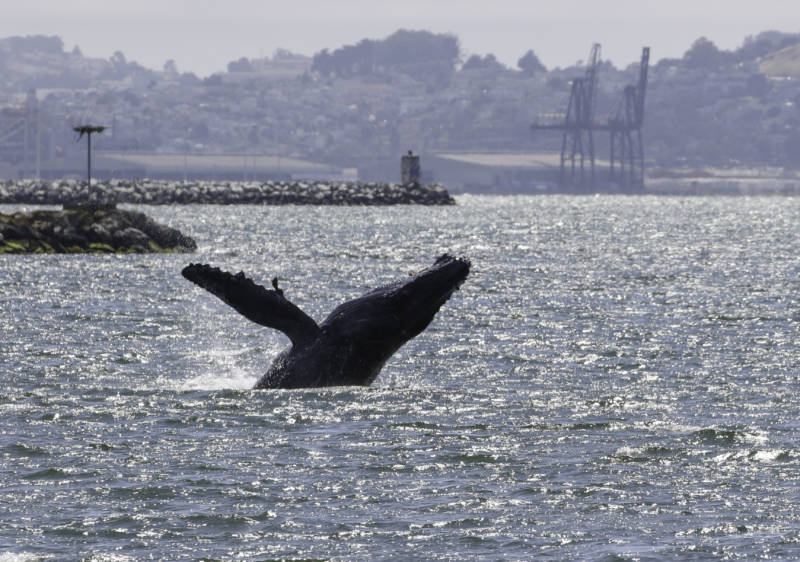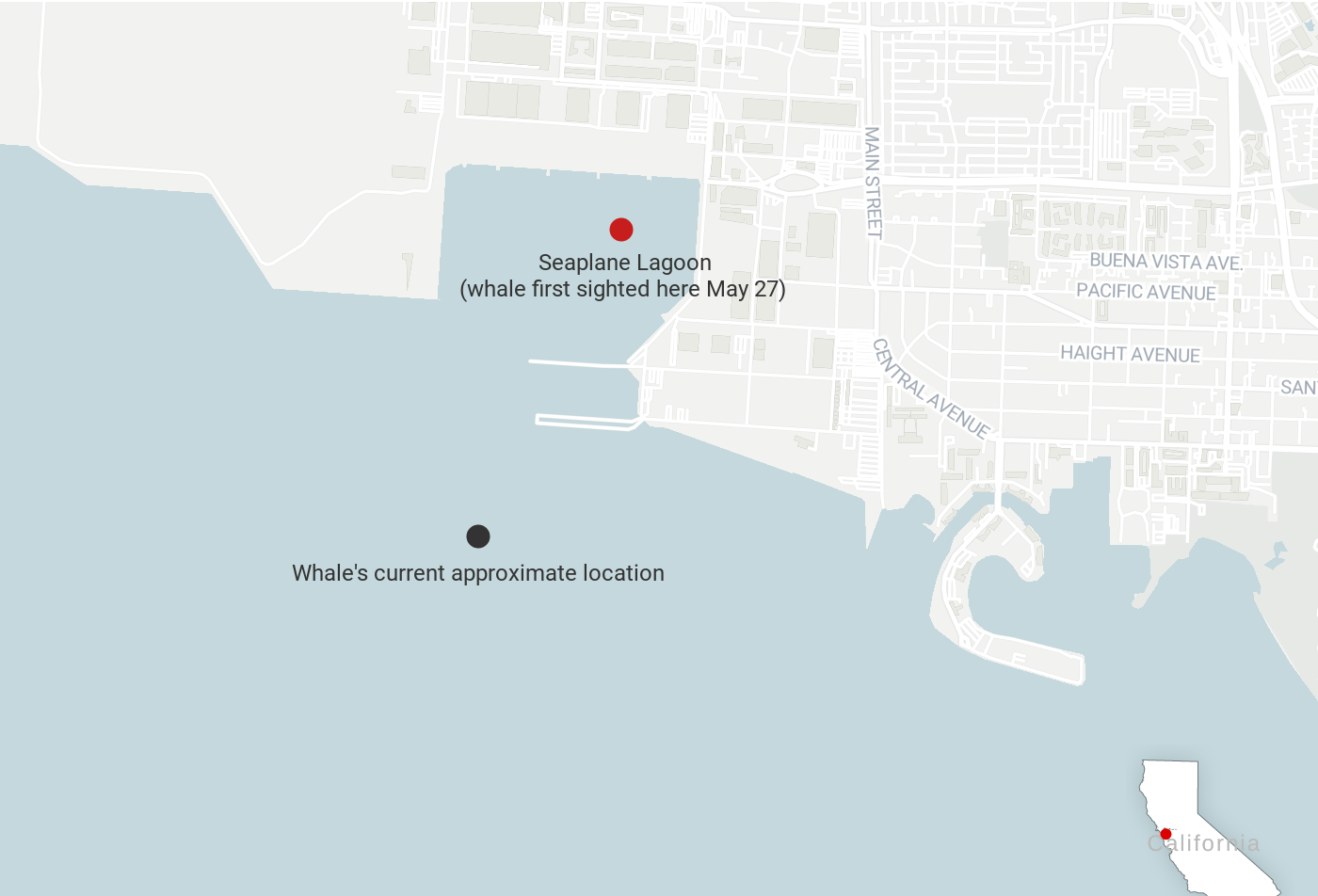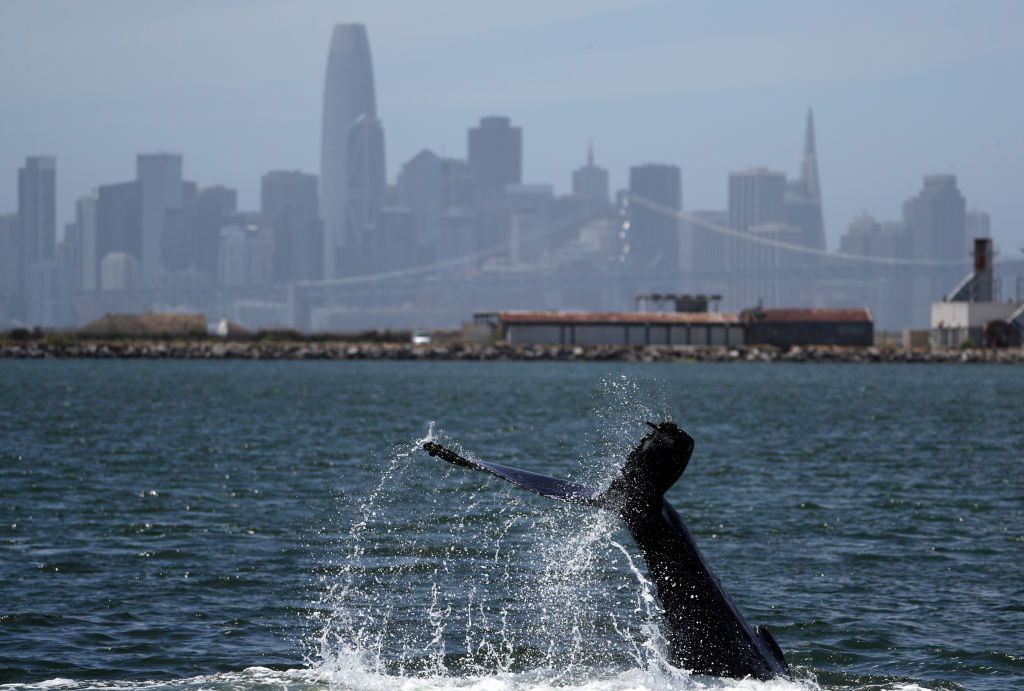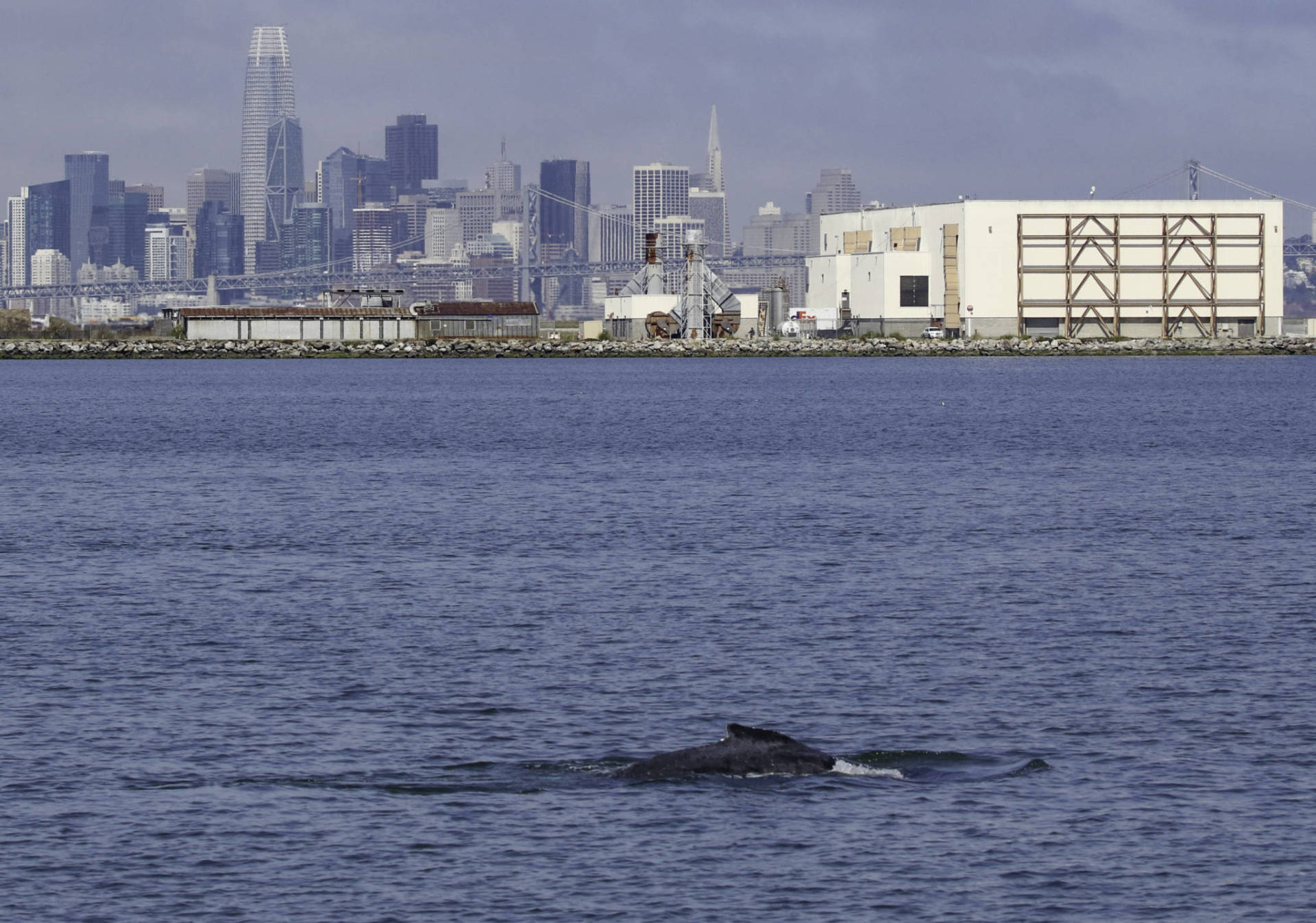A humpback whale that has been circling the waters near Alameda's shoreline for more than 10 days has now moved into a slightly deeper area nearby, according to a local marine watch group.
“It's not out in the open bay, but one step closer to it,” said Bill Keener, a researcher with the Marine Mammal Center.
The Marin Headlands-based center has been monitoring the whale since May 27, when sightings were first reported in Alameda's protected Seaplane Lagoon in the shallow waters off the former Alameda Naval Air Station.
The whale is an underweight adult female with unhealthy skin, said Keener, who has been observing the animal closely by boat and estimates it to be roughly 45 feet in length. There are no visible wounds or other indications of external injury or entanglement, he added.
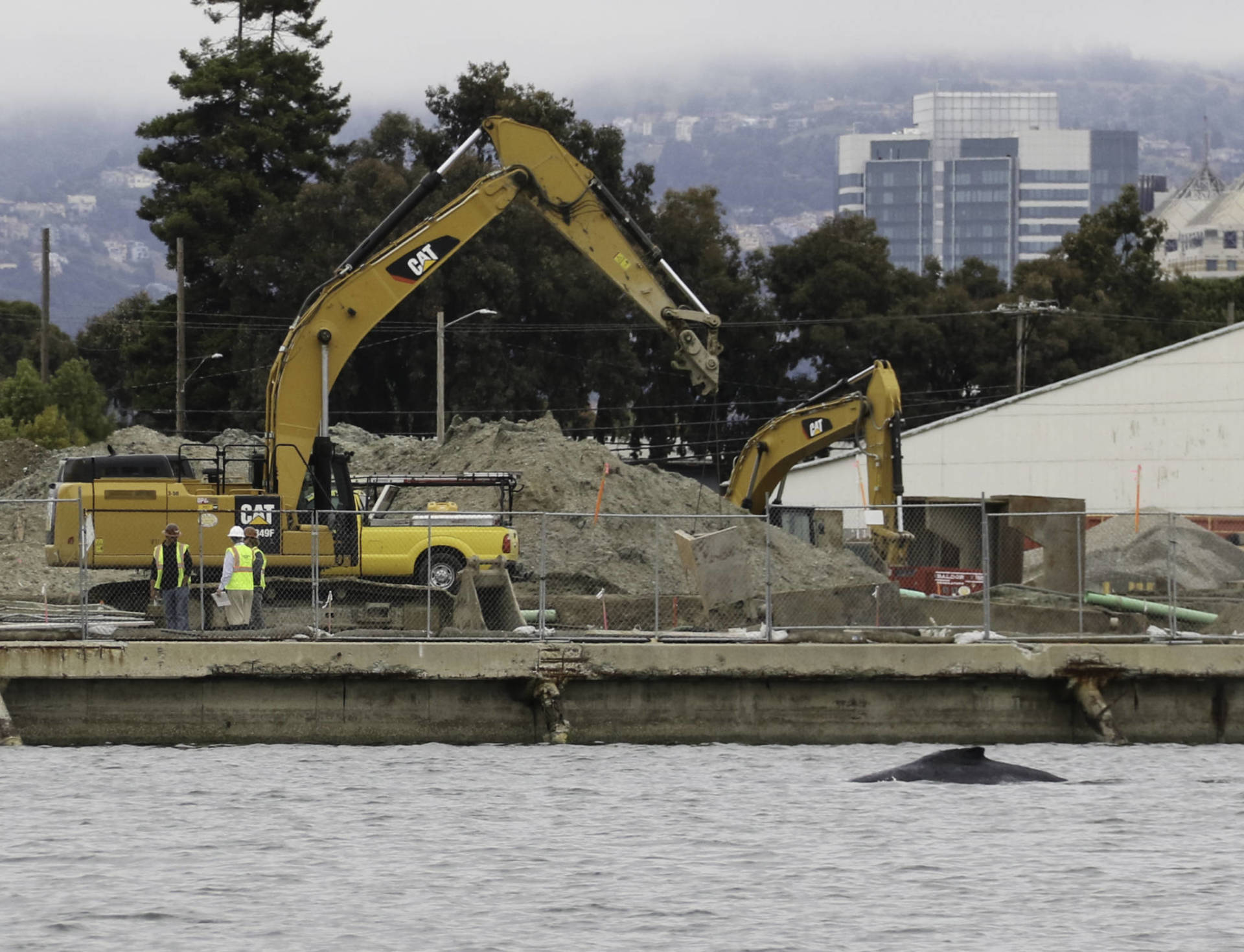
Although humpback whales have been spotted at this time of year near the Golden Gate Bridge and Alcatraz, where they feed on anchovies, it's highly unusual for them to swim this far into shallow waters and remain for any length of time, Keener said. He speculated that the whale is in poor health and sought shelter in a calmer area to recover.
For more than a week, the whale had circled in a small area of the lagoon, grabbing the attention of local residents, who have been lining the shore to catch a glimpse of the animal spouting or breaching.
